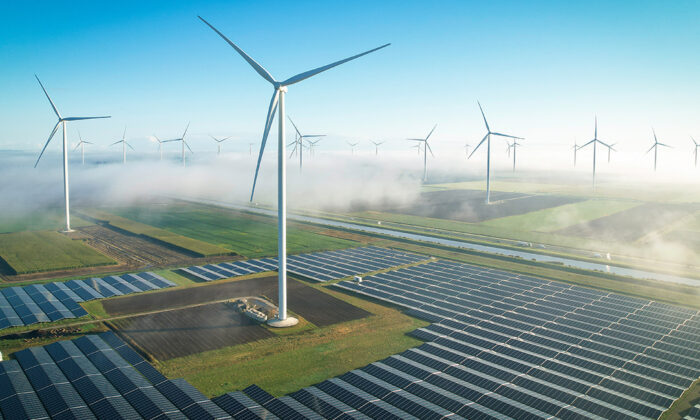Australia is in need of infrastructure development, particularly in managing waste generated by solar and wind resources in the clean energy transition. The Australian government is currently exploring ways to enhance its renewable waste management and resource recovery efforts. This initiative aligns with the country’s 2030 targets under the National Waste Policy Action Plan, which includes achieving an 80 percent recovery rate from all waste streams and increasing the use of recycled materials.
Renewable energy, such as solar and wind, play a crucial role in Australia’s shift towards clean energy. However, they also produce significant waste, posing challenges for waste management infrastructure in the country. While some improvements have been made, such as plans by wind turbine producers to achieve zero waste turbines by 2030, more needs to be done.
Solar energy, in particular, is a key component of Australia’s net zero goals. However, it is projected to generate a substantial amount of waste in the coming years. Efforts are being made to recycle materials from solar panels, but limitations in recycling programs hinder the process. The Australian government has expressed its intention to establish a regulated solar panel recycling scheme to address this issue.
The recycling of solar systems involves various components, with some materials being easily recyclable while others pose challenges. The cost of solar system recycling in Australia is also a concern, as it can be expensive. Despite these challenges, there are opportunities for reuse and repurposing of solar panels, contributing to a more sustainable approach to waste management in the renewable energy sector.
Wind Turbine Disposal
Wind turbines, a cost-effective source of clean renewable energy, also contribute to non-recyclable waste that often ends up in landfills.
By 2034, the decommissioning of wind farms in Australia is expected to produce around 15,000 tonnes of blade waste, according to the Clean Energy Council.
Despite the waste generated, wind turbines are mostly recyclable, with 85 to 90 percent of their mass being recyclable in Australia.
A 2022 University of South Australia study warned that without proper end-of-life programs, tens of thousands of wind turbine blades could end up in landfills.
Recycling turbine blades presents challenges due to their carbon fibre or glass fibre composite material composition, which is costly to break down and has minimal market value.
Professor Peter Majewski, leading the study, highlighted the difficulty in recycling turbine blades efficiently due to their design features.
Given the high cost of recycling and low value of retrieved materials, a market-based recycling solution may not be feasible, according to Majewski.
He suggested that sustainable disposal costs should be factored into manufacturing or operating wind turbines to address the recycling challenges.
Proper disposal systems need to be established through official frameworks to ensure responsible disposal if manufacturers cease operations or wind farms face financial difficulties.
On the government front, a wind turbine recycling facility is in development, with a commitment of $3 million under the Cooperative Research Centres Program, according to a DCCEEW spokesperson.
Could you please rewrite this for me?
Source link





